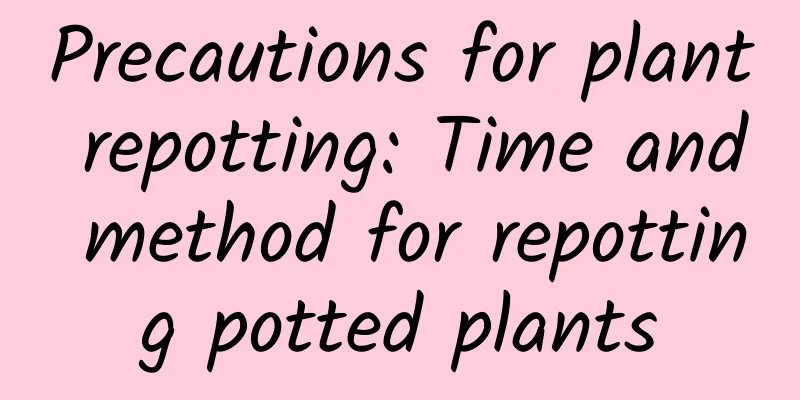Precautions for plant repotting: Time and method for repotting potted plants

Things to note when repotting plantsGenerally, after 1-3 years of plant growth, the nutrients in the pot will be consumed. As the plant grows, the original pot is too small and not conducive to the expansion of the root system. At this time, the pot needs to be repotted. However, repotting has high requirements for temperature. Try to choose spring and autumn when the climate is mild and suitable for subsequent plant growth. 1. When repotting, please note that the more times you repot, the better. Twice a year is the maximum. Repotting more often will hinder the normal growth of the plant and may even cause it to wither and die. For slow-growing plants, repotting once every three years is sufficient. 2. After repotting, the plants need to be placed in a cool and ventilated place. After about a week to adapt to the environment, they can be moved to a place with sufficient sunlight and good ventilation for maintenance. Also, it should be noted that it is best not to fertilize the plants within three months after repotting. Key points for plant repotting1. Root pruning and drying When repotting the plant, trim off the old roots, diseased roots, rotten roots and weak roots. After pruning, soak the roots in diluted carbendazim or potassium permanganate solution to disinfect and sterilize them. Dry them in the sun for 2-3 days before planting. 2. Watering Most plants cannot be watered immediately after being repotted. They must be placed in diffuse light for about 7-15 days. Wait until the soil is completely dry before watering. Water slowly and in small amounts to prevent water accumulation in the soil and root rot. 3. Soil for repotting Generally, plants prefer loose, breathable, well-drained and fertile soil. You can buy ready-made soil suitable for plant growth on the market, or you can prepare it yourself according to the needs of plant growth and then use it after exposing it to the sun for sterilization. |
<<: Things to note when to repot hydrangeas: When is the best time to repot?
>>: Precautions for transplanting honeysuckle: When is the right time to transplant?
Recommend
How long are the leaves of green radish? Can the leaves be eaten?
1. Leaf length The leaves of the green radish are...
How and when to grow onions
Onion is a common vegetable in our daily life. Du...
The cultivation method and cultivation method of silver-edged spider plant
1. Maintenance methods 1. Temperature: 20 to 30 d...
What is yellow sprouts?
What is yellow sprouts? Yellow cabbage is actuall...
How to deal with edible lilies after they bloom
Treatment of edible lily after flowering 1. Pruni...
The process of bean germination
The process of bean germination Beans are common ...
The reason why the trunk of the Osmanthus fragrans tree turns black
1. Infection Reason: If not properly maintained, ...
Why are the leaves of seabuckthorn bonsai withered?
1. Too much light Sea buckthorn is a light-loving...
Can crabapple be pruned in autumn? Can it be transplanted in autumn?
1. Can it be trimmed? Begonias can be pruned in a...
Cultivation methods and precautions of cool water flowers
1. Lighting requirements It likes places with goo...
How to prepare osmanthus soil and nutrient soil for planting
Requirements for preparing osmanthus soil Osmanth...
The efficacy and function of sweet potato leaves
1. Laxative Sweet potato leaves contain a large a...
What kind of tree is the lucky tree? Is it evergreen or deciduous?
1. Morphological characteristics The lucky tree i...
What disease is yellowing of grape leaves? What medicine is used and what causes it?
1. What medicine should be used for what disease?...
What to do if succulent ruby turns into water
First step observation When faced with a succulen...









